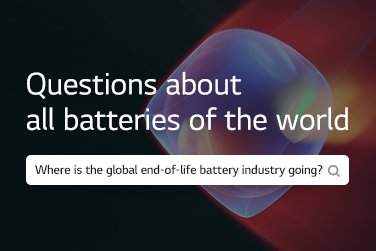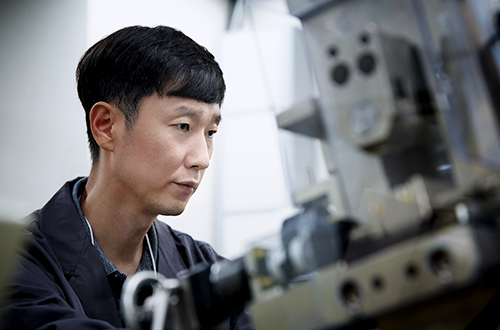✍️
Dr. Dong Won Shin
Director, Division for Climate and Energy, Korea Environment Institute(KEI)
A Global Trend in Climate Action and Changes in the Government
Carbon neutrality is becoming a global trend. Since it became the agenda of the Paris Agreement in 2016, major advanced countries declared going carbon neutral and joined the global movement one after another. In recent years, recurring forest fires, extreme floods, and droughts worldwide have raised a red flag over climate change. Highlighting that the climate is changing faster than expected, the climate action reports including IPCC special report emphasized the need for carbon neutrality. Led by developed nations, the move to participate in carbon neutrality is getting stronger. Moreover, the European Union (EU) announced a Green Deal policy as a national strategy for the future against COVID-19. As a deadline is set to reach net zero, this policy is firing up discussions on carbon neutrality.

Recognizing the seriousness of climate change and considering that carbon neutrality is emerging as a global paradigm, the Korean government, like China and Japan, has also declared going net-zero and preparing a net-zero strategy. In addition to responding to the climate crisis, such a move is vital to achieving diplomatic goals with the international community and allies. Also, we need to pay attention to future national competitiveness. Going carbon neutral is closely related to our future economy and social structure. This is especially true for countries with the export-oriented economy.
For example, the US and Europe (EU) are pushing hard to introduce carbon border adjustment measures that apply additional measures, such as levies to countries with weak greenhouse gas emission regulations when they export goods to countries with stronger regulations. This would particularly hurt financially any export-oriented countries that have not prepared for a low-carbon society. In addition, the EU is introducing a new plastic tax in addition to a carbon tax, strengthening environmental regulations. The Korean government is determined to respond quickly to this new order. Such a move reflects the structure of Korea’s economy and industry, which are highly dependent on trade. The government deems that if it adopts a lukewarm response, global investment or purchasing opportunities for critical industries will be limited, and the country will be disadvantaged when attracting overseas financing.

The journey towards carbon neutrality opens up an opportunity to create a new growth engine for the future by greening industries and nurturing the green industry’s growth. In particular, fields with technological competitiveness are expected to play a significant role in the carbon neutralization process. Recently, the Deputy Prime Minister and Minister of Economy and Finance said, “Korea has the largest market share in the global EV battery and ESS market,” and added that “although going net-zero is tough, it is the way to go. And it requires forward-thinking and active innovation.” The government expects that since Korea has a strong battery and hydrogen technological capacity, successfully promoting green innovation projects will accelerate carbon neutrality. The Ministry of Trade, Industry, and Energy has created a new deputy minister position for energy and is strengthening the overall policy function managing future automobiles. The government announced that it would achieve economic growth through more robust industrial competitiveness and the quality of life by carbon-neutral by 2050.
Going Beyond Corporate Strategy and Choosing Survival and the Future
The rechargeable battery in ESS and electric vehicles is the core industry that spearheads carbon neutrality. However, it also needs to reduce greenhouse gas emissions during its manufacturing process. To resolve the issue and achieve net-zero, the industry has several strategies to choose from.
First, it could reduce greenhouse gas emitted by factories during manufacturing and increase the share of renewable energy such as solar and wind power. Second, it may consider recycling resources through the circular economy, which refers to transitioning from the linear ‘production-consumption-disposal’ structure to the circular ‘production-consumption-regeneration’ structure. The environmental impact of a surging number of end-of-life EV batteries with the EV boom is expected to affect ESG management adversely. Therefore, collecting and recycling used batteries not only solve environmental problems but also reduces the supply and demand risk arising from unstable raw and subsidiary material supplies. The battery industry should strive to improve the performance and safety of rechargeable batteries. But it should also endeavor to reduce carbon emissions throughout the entire steps of the circular economy, including manufacturing, recycling, and disposal.

As a global leader in the battery industry, LG Energy Solution aims to achieve carbon neutrality by 2050. In the short term, the company plans to establish a “virtuous cycle of resources” that encompasses the entire supply chain from procurement of battery raw materials to production, consumption, and disposal by 2025 and achieve RE100 by 2030. Its goal is to reduce carbon emissions by operating manufacturing facilities around the world with 100% renewable energy. Going beyond the carbon reduction strategy, LG Energy Solution has demonstrated its will to achieve carbon neutrality by reusing end-of-life batteries or developing products to support the virtuous cycle of plastic waste.
As the number of end-of-life batteries is expected to surge in the future, related industries, along with LG Energy Solution, plan to create a used battery collection network in Korea. They also intend to extract metal for cathodes such as lithium, cobalt, and nickel to recycle them in battery manufacturing, even if reusing them is not viable. The strategy is to partially manage supply instability and price fluctuation risks by tapping into the recycling business.
Future of the Battery Industry and Climate Change
The rapid increase in battery demand is not a surprise. Supply is expected to increase with demand. However, with capital and technological limitations and barriers to supply ecosystems, entering the supply chain won’t be easy for now. Eventually, these barriers would gradually disappear, and many companies will enter the market. Then, the development of alternative materials will accelerate due to the limited resources, including raw materials. International competition may increase costs and reduce corporate profits. Unpredictable barriers, such as nationalism or changes in international relations, could arise. Responding to climate crises, including efforts to achieve carbon neutrality, plays a vital role in the energy transition. But against such uncertainty, it is also essential to enhance a company’s future green competitiveness by acquiring carbon reduction capabilities through internal technological and institutional transformation.

As time passes, climate change accelerates, and climate disasters will become more frequent than ever. The international community’s move toward carbon neutrality will intensify, and companies with the capability to implement carbon neutrality will have a clear first-mover advantage. The costs and burden on companies that will strive towards carbon neutrality will be rewarded with future competitiveness and innovative technology.
※ This column was written based on the writer’s views and does not necessarily reflect the opinion or strategy of LG Energy Solution.





